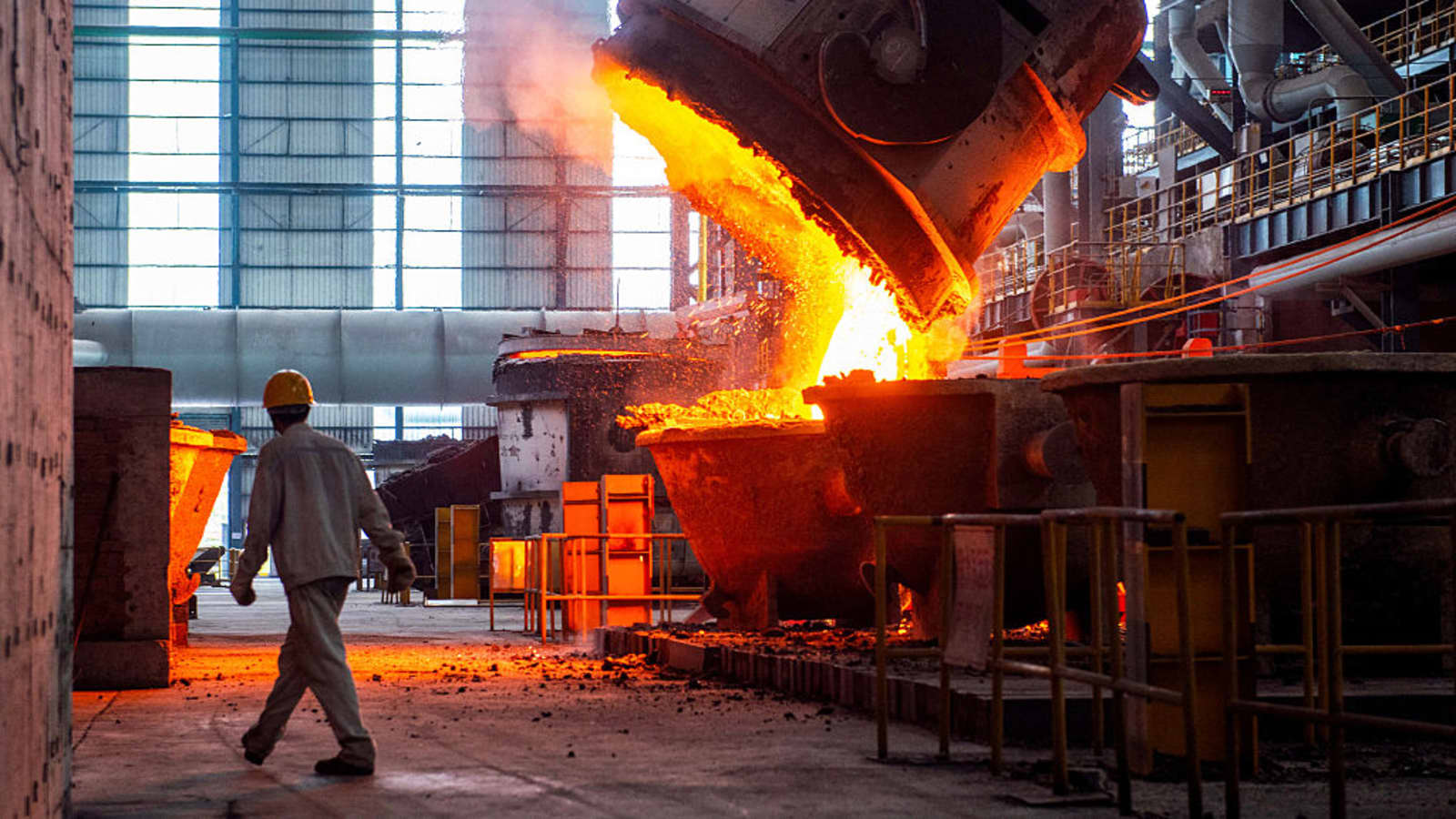EU Launches World’s First Carbon Border Tax, Reshaping the Future of Global Trade
EU Launches World’s First Carbon Border Tax, Reshaping the Future of Global Trade
By
Leah Rosenfeld
Last updated:
October 1, 2025
First Published:
November 30, 2025

A worker walks past molten steel at a steel factory in Huai’an, in China’s eastern Jiangsu province on July 22, 2025. - | Afp | Getty Images
A new era in trade and climate policy
The European Union is preparing to roll out the world’s first large-scale carbon border tax on January 1, a move that could permanently alter the way global trade operates. Known as the Carbon Border Adjustment Mechanism (CBAM), the policy will place a levy on carbon-intensive imports such as steel, cement, fertilizers, aluminum, and hydrogen entering the 27-member bloc.
The EU describes the measure as essential to its broader climate agenda, which includes cutting greenhouse gas emissions by at least 55% by 2030. Importers will be required to purchase CBAM certificates, pegged to the market price of the EU Emissions Trading System (ETS), effectively aligning foreign producers with the bloc’s carbon pricing system.
Why the CBAM matters for global markets
This policy goes far beyond Europe’s borders. By pricing emissions on imports, the EU aims to prevent “carbon leakage” — when companies relocate production to countries with looser climate rules. But the CBAM also represents a powerful new trade instrument that could shift competitive dynamics across global industries.
Steel, cement, and fertilizer exporters to Europe will be among the first sectors hit. With the EU importing nearly 20% of its steel and 25% of its fertilizers, the ripple effects are expected to reach producers from China to Brazil. According to analysts, the cost of certificates could add 15–30% to the price of some imports, forcing global industries to adapt or risk losing market share.
Global backlash builds
Not all trading partners are welcoming the change. The U.S., China, India, Brazil, and Russia have raised objections, warning that the CBAM may undermine global climate cooperation. India has already threatened retaliatory tariffs, arguing that wealthier nations responsible for historic emissions should bear more of the cost of climate action.
The U.S. has also expressed concern that the new policy could complicate its trade relationship with Europe. American officials warn that exporters — particularly in fossil fuels and heavy industry — may face “huge legal risks” if the CBAM is applied without adjustments.
China and Brazil have voiced similar complaints at World Trade Organization meetings, while Russia has argued that the EU is disguising protectionism as climate policy.
A test of Europe’s climate leadership
Despite the criticism, Brussels is pressing ahead. EU leaders say the CBAM is not about protectionism but about fairness — ensuring foreign producers face the same carbon costs as domestic companies. For European Commission President Ursula von der Leyen, who championed the border tax as part of her 2019 platform, the mechanism is central to Europe’s pledge to lead the global fight against climate change.
Analysts note, however, that Europe’s leadership comes at a price. If major economies refuse to follow suit, the EU risks higher costs for its industries and potential trade disputes. Still, policymakers hope the CBAM will push other countries to adopt their own carbon pricing systems, creating a more level global playing field.
The bigger picture: towards a global carbon regime
Industry experts believe the EU’s carbon border tax could be the beginning of a much broader transformation. Nicolas Endress, CEO of ClimEase, argues that “within the next few years, carbon pricing won’t just be a European experiment — it could cover as much as 80% of global trade.”
Countries with robust emissions trading systems stand to benefit, while those resisting change may see their exporters penalized in global markets. Already, Canada and Japan are exploring their own border carbon measures, while the U.S. Congress has debated similar proposals.
Outlook: disruption or opportunity?
The CBAM is set to become one of the most consequential policies in international trade this decade. For some industries, it represents a disruptive new cost burden. For others, especially those investing in cleaner technologies, it could be an opportunity to gain competitive advantage in the European market.
What is clear is that the EU has redrawn the rules of global trade. Whether the CBAM sparks wider adoption of carbon pricing or ignites a wave of trade disputes will depend on how the world’s largest economies respond in the coming years.
Popular articles
Subscribe to unlock premium content
Gourmet Gold: Micro-Venture Funds and Europe’s Artisan Food Revolution

Artificial Elegance in Fashion

Ferrari’s Craft of Desire

Gourmet Gold: Micro-Venture Funds and Europe’s Artisan Food Revolution

Artificial Elegance in Fashion

Gourmet Gold: Micro-Venture Funds and Europe’s Artisan Food Revolution









